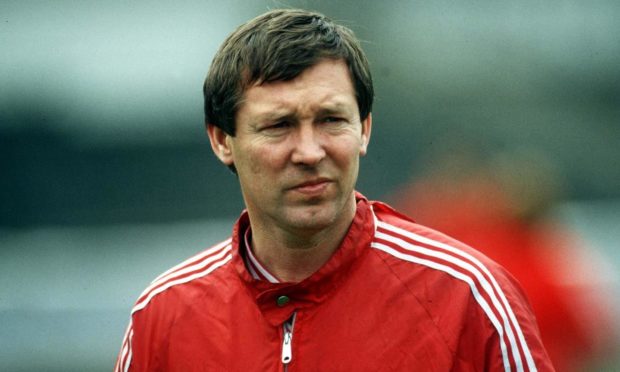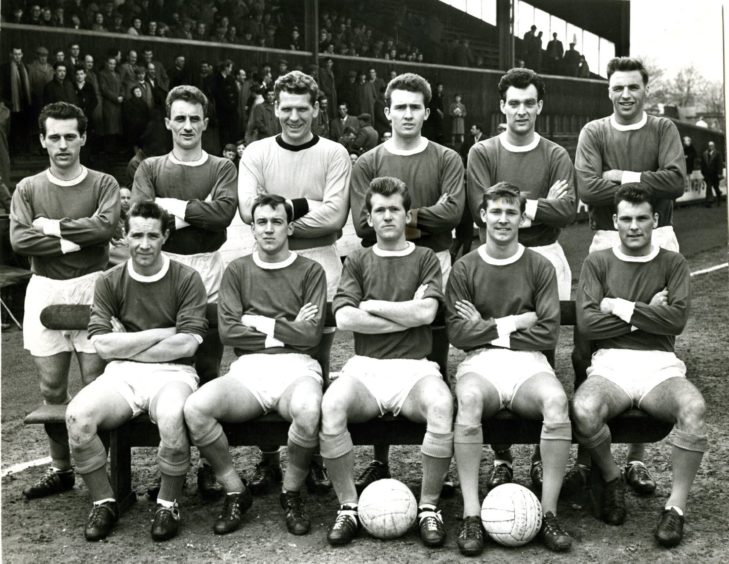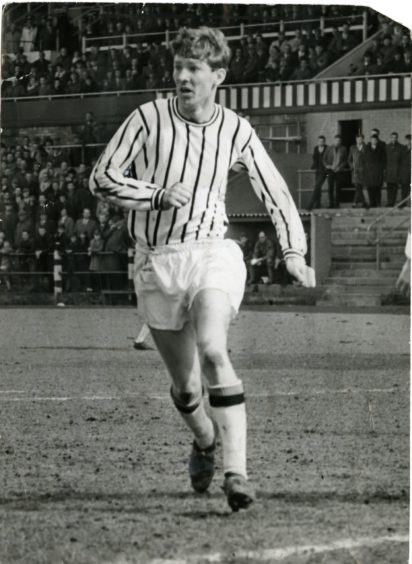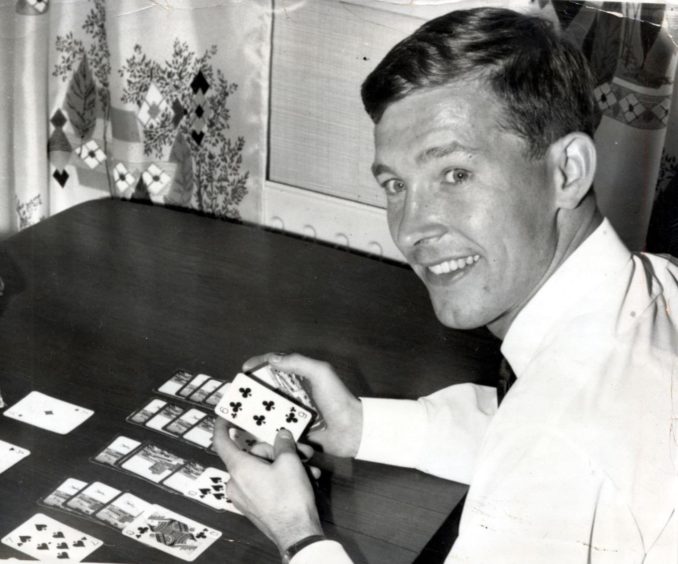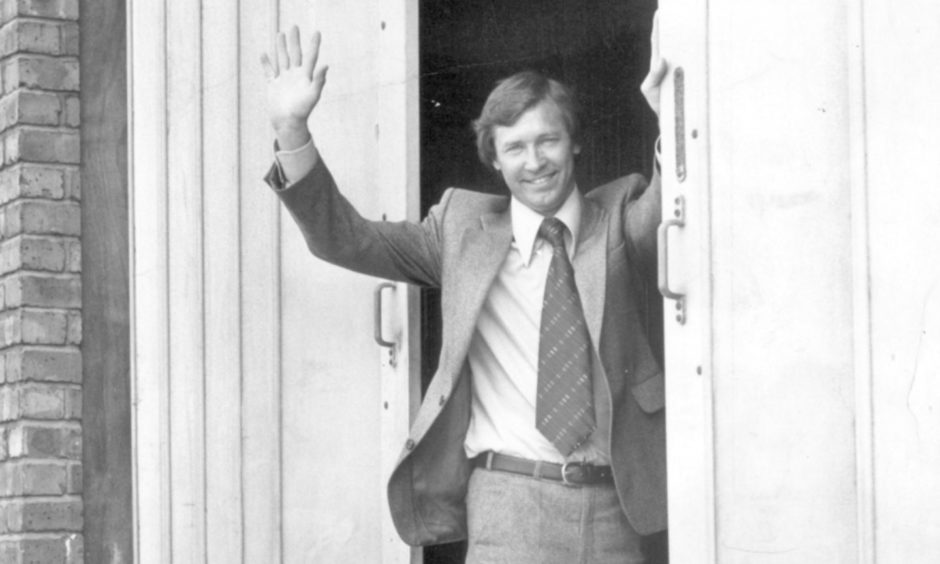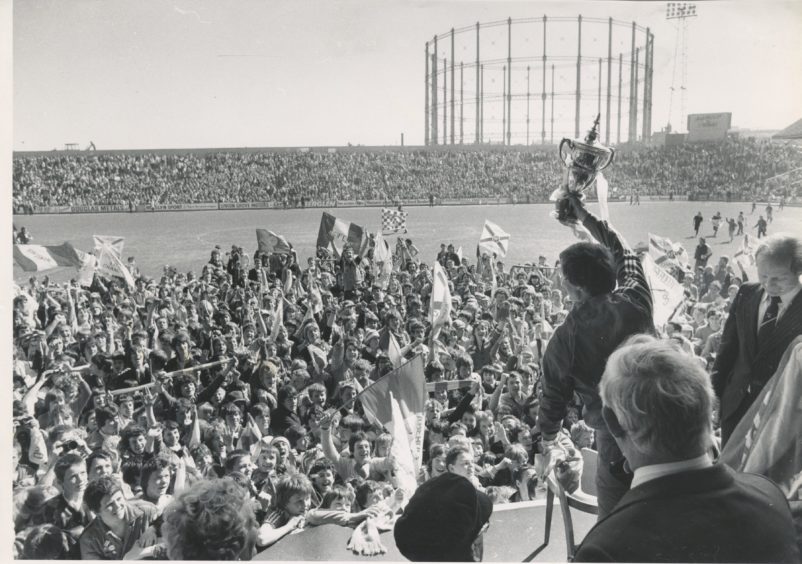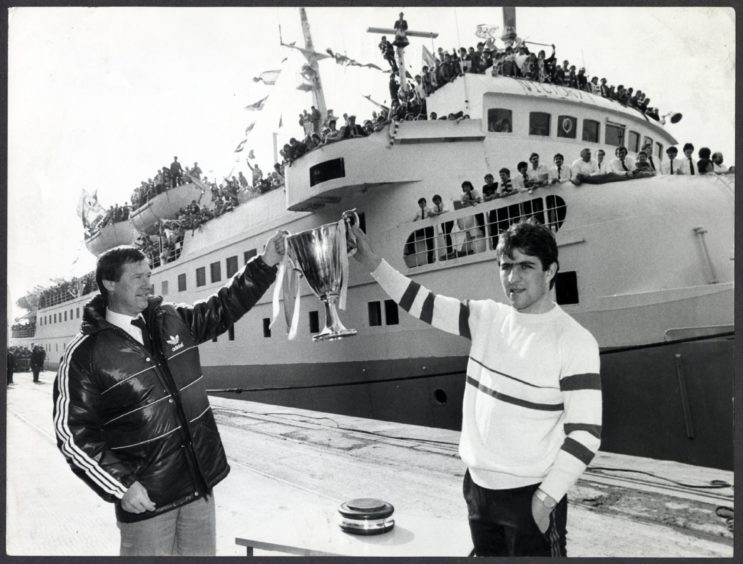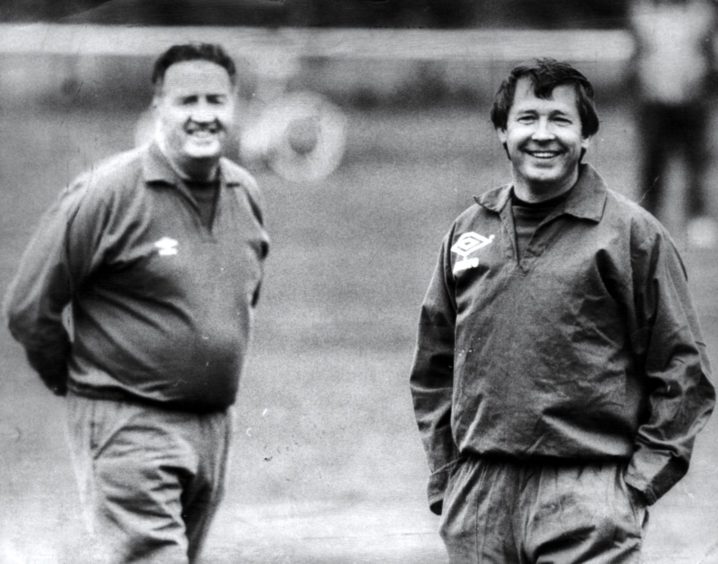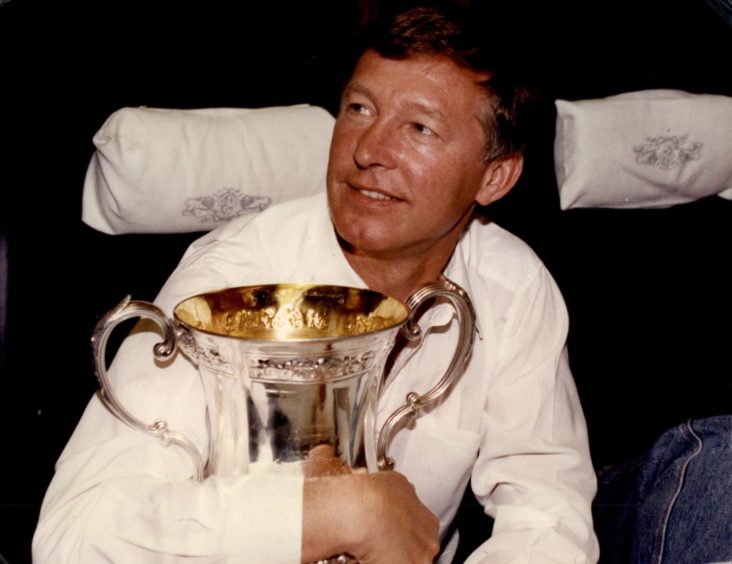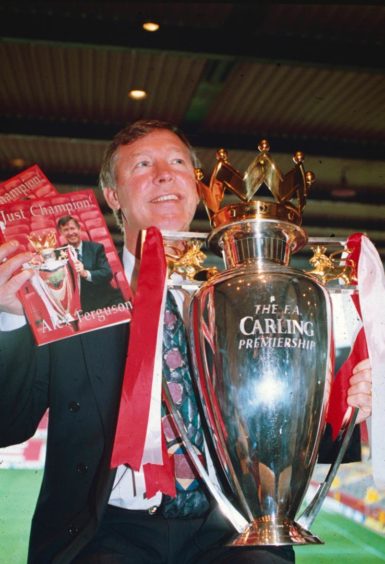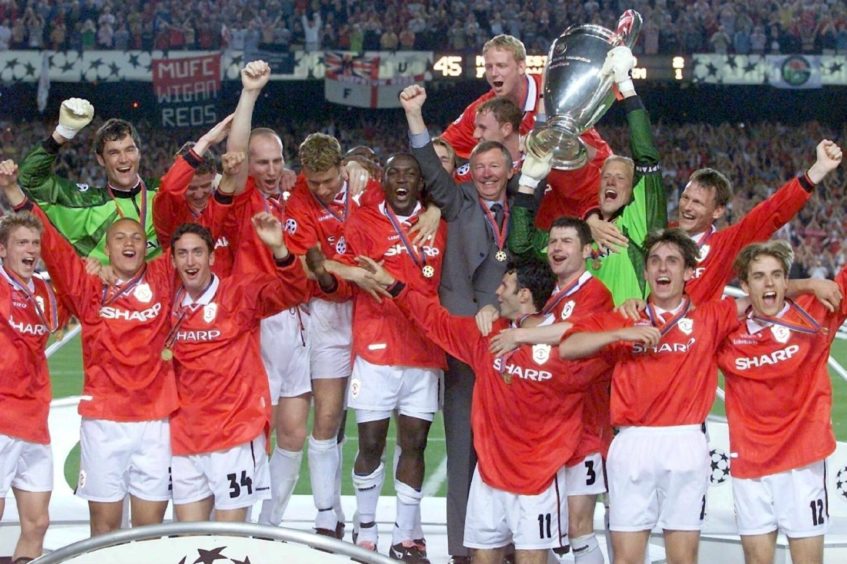Sir Alex Ferguson achieved unimaginable success at Aberdeen before going on to lead a dynasty at Manchester United that lasted three decades.
Sir Alex looks back at his life and incredible career in a new documentary film which is available on Amazon Prime and in cinemas in the UK this week.
Sir Alex Ferguson: Never Give In, will follow his journey from Govan in Glasgow to becoming one of the greatest managers the sport has ever seen.
To mark the release of the new movie we take a look at some of the defining images of his incredible career which included an astonishing 49 major trophies as a manager.
Sir Alex almost gave up the game in 1963
Born in 1941, Sir Alex credited his tough, working-class upbringing with giving him the backbone to rise to the top.
On leaving school, he began working at the Clyde shipyards as an apprentice tool-worker.
His senior career started as an amateur at Queen’s Park in 1957 before he moved to St Johnstone in 1960.
Sir Alex was on the brink of giving up football and moving to Canada when he scored a hat-trick against Rangers in 1963 and the rest is history.
Unable to hold down a regular place at St Johnstone, his repeated transfer requests resulted in an exchange deal for Dunfermline’s Dan McLindon in 1964.
Sir Alex believes he played his best football while wearing the black and white and clearly takes pride in being part of their history, as somebody who scored a remarkable 66 goals in just 89 games before moving on to Rangers.
He scored seven hat-tricks for the Pars under manager Willie Cunningham and was the club’s top scorer in each of his three seasons.
He fulfilled a lifelong ambition when he was snapped up by Rangers in 1967 for £65,000 which was a record transfer fee between Scottish clubs.
Scot Symon was sacked as manager only a few months after he signed but he said Symon played a key role in shaping his future in the game.
“He was the old type of manager in that he literally arranged everything for the club completely by himself,” he said.
“He had a marvellous knowledge of the game and his loyalty to the club player was tremendous.
“He was held in great respect and had a very powerful presence about him.”
Sir Alex went on to score 36 goals in 69 appearances at Ibrox before leaving for Falkirk in 1969.
He spent four years as a player at Falkirk and was rewarded with a player-coach role at Brockville, scoring 57 times in 128 games along the way.
He joined Ayr United under Ally MacLeod in 1974 before a serious knee injury finished his playing career at the age of 32.
It was in June 1978 that he walked into the Aberdeen stadium as manager, and following earlier jobs in charge at East Stirling and St Mirren, Dons chairman Dick Donald was persuaded that here was a young coach with big ambition who could move the club forward.
They had won the league championship just once – in 1955 under Dave Halliday – but he sought to put his own stamp on the club and rectify what he saw as under-achievement.
When the Dons thumped Hibernian 5-0 at Easter Road on the final day of the 1979-80 season, they lifted only their second top-flight title in their history.
Sir Alex’s Reds were also the first team outside Rangers and Celtic to win the league crown since Kilmarnock in 1965.
That league championship triumph was just the beginning of a remarkable eight years during which he won three Premier League titles, four Scottish Cups, one League Cup, the UEFA Cup Winners’ Cup and the UEFA Super Cup.
The 2-1 win after extra-time against Alfredo Di Stefano’s Real Madrid to win the European Cup Winners’ Cup in Gothenburg in 1983 was arguably his greatest triumph.
Eric Black had put Aberdeen on the road to glory in Sweden before Real captain Juanito converted a spot-kick to level the game with only 15 minutes gone.
With neither side able to convert a chance to win the tie in normal time, the game went into extra-time.
However, substitute John Hewitt grabbed the winner, and immortality, after 112 minutes with a diving header after a cross from the left wing by Mark McGhee.
Fergie’s Gothenburg Greats remain the only Scottish club to have won two European trophies.
Sir Alex would go on to take charge of Scotland’s fortunes in unforeseen and tragic circumstances, following the sudden death of Jock Stein in Wales in 1985.
He was in charge for the 1986 Mexico World Cup when Scotland failed to build up any momentum and went out in the first round following two defeats and a draw.
Sir Alex left for Manchester United in 1986 with the blessing of grateful Dons supporters.
He made several major signings, including Steve Bruce, Brian McClair and Viv Anderson, but trophies eluded the new boss.
Sir Alex had been at the club for three seasons and he was under pressure when United limped to the FA Cup final in May 1990 after finishing 13th in the league.
Left-back Lee Martin’s chest-down-and-half-volley clinched his first trophy as United manager following a replay against Crystal Palace at Wembley.
Because UEFA had just announced that the ban on English clubs in European competitions would be lifted for the 1990-91 season, United were given the green light to compete in the Cup Winners’ Cup, which they won.
That success opened the floodgates and Sir Alex added the League Cup before masterminding United’s first league title in 25 years in 1993.
When he retired he’d won 13 of them, along with five FA Cups, four League Cups and two Champions Leagues.
United’s 1999 Champions League final win in stoppage time in Munich was arguably his most famous night as manager and sealed a unique treble.
Bayern took an early lead through Mario Basler and dominated the rest of the game, hitting the woodwork twice in the second half.
United won a corner just as the fourth official indicated three minutes of injury time, and skipper for the night Peter Schmeichel raced into the Germans’ box.
After a scramble substitute Teddy Sheringham turned the ball in and it seemed that United had forced extra time.
But less than 30 seconds later United won another corner and Sheringham nodded the ball down across the face of goal for the other sub, Ole Gunnar Solskjær, to poke the ball into the roof of the net.
After 27 years as manager of Manchester United, Sir Alex took charge of his last league game in May 2013.
He saw his side draw 5-5 with West Brom at The Hawthorns.
